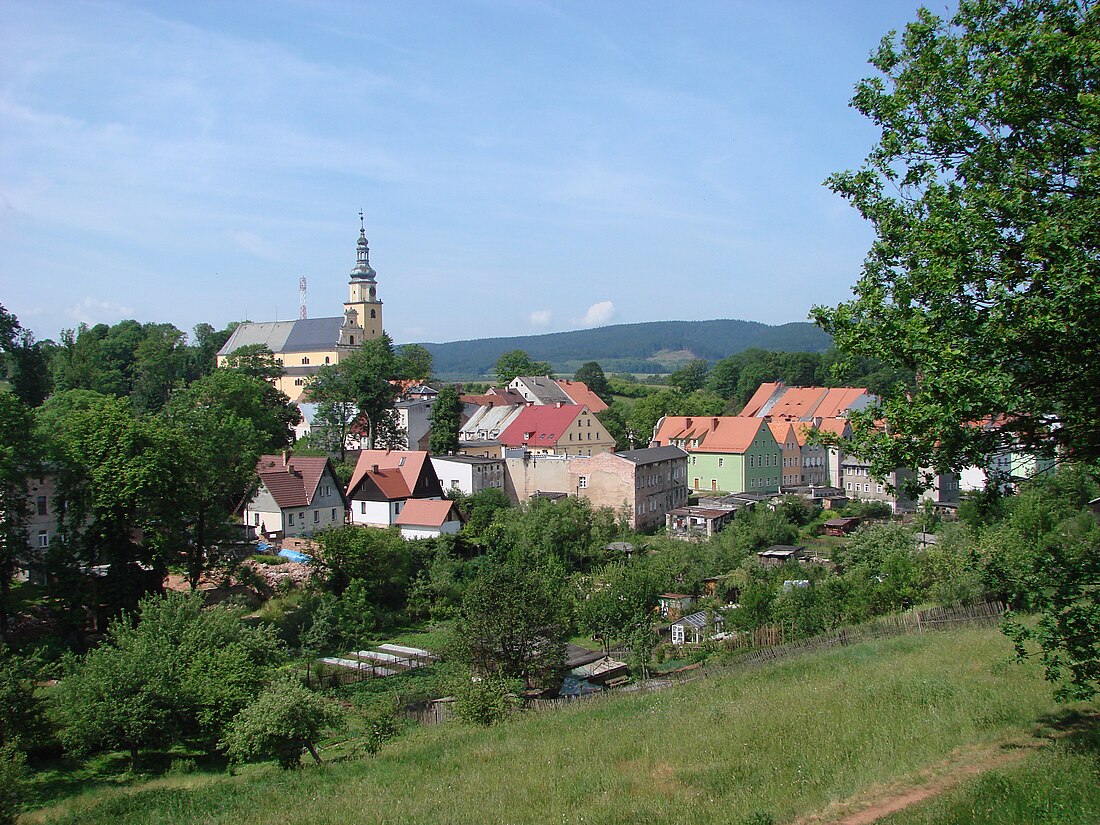Top Qs
Timeline
Chat
Perspective
Chełmsko Śląskie
Village in Lower Silesian Voivodeship, Poland From Wikipedia, the free encyclopedia
Remove ads
Chełmsko Śląskie [ˈxɛu̯mskɔ ˈɕlɔ̃skʲɛ] (German: Schömberg) is a village in the administrative district of Gmina Lubawka, within Kamienna Góra County, Lower Silesian Voivodeship, in south-western Poland, near the border with the Czech Republic.[1]
Remove ads
History
Summarize
Perspective
The settlement was first mentioned in 1207 and was granted town rights as late as 1289, when it was part of medieval Poland. The town later became part of Bohemia within the Holy Roman Empire. The town was ruled by the Krzeszów/Grüssau Abbey. After the Reformation, the residents became Protestant. Despite oppression by the Abbey and Recatholication policies in Austrian-ruled Silesia, the residents sticked to their Protestant faith. Despite order by Rudolf II to respect Protestants, the Abbey assigned a Catholic priest to the town in 1619.[2] In the 18th century, the town was annexed by Prussia and from 1871 it formed part of unified Germany.
During World War II the German Nazi government established and operated a branch of the Gross-Rosen concentration camp in the town.[3] During the war, the historical fabric of the village suffered virtually no damage.
For a time, the village was called Szymrych, and Polish resettlers from the Soviet-annexed former eastern territories and the Carpathians arrived. Under the imposed Communist regime, there was a negative attitude towards the legacy of the previous population for ideological reasons. Several buildings were destroyed. The Protestant church was used as a storehouse and the four hotels of the town disappeared. Over the years, attitude of the new citizens to the village past evolved from hostility over adaption and acclimatisation to adaption.[4]
Remove ads
Sights
Chełmsko Śląskie contains numerous historic buildings and structures, the oldest dating back to the Middle Ages.
- Baroque Holy Family church
- Market Square (Rynek) with historic townhouses
- Old weavers houses from 1707, called the Twelve Apostles
- Gothic sculpture of Hedwig of Silesia, High Duchess consort of Poland and patron saint of Silesia, at the Market Square
References
Further reading
Wikiwand - on
Seamless Wikipedia browsing. On steroids.
Remove ads






